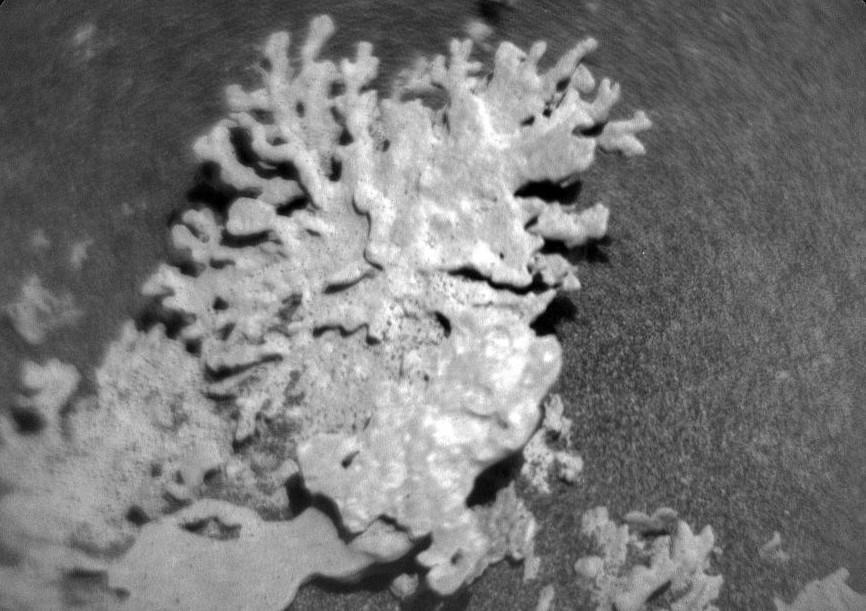
Coral-shaped rock spotted on Mars, NASA shares pic
NASA’s Curiosity Mars rover has made a fascinating discovery on the Martian surface, sending back black and white images of a rock that bears a striking resemblance to a piece of coral. The rock was found in the Gale Crater, a large impact basin on Mars, and is believed to be around a billion years old.
The images were captured by the rover’s Chemistry and Camera (ChemCam) instrument, which is designed to analyze the chemical composition of rocks and soil on the Martian surface. The ChemCam instrument uses a laser to vaporize a small portion of the rock, and then analyzes the resulting plasma to determine the chemical makeup of the sample.
The coral-shaped rock is located in the central part of Gale Crater, which is about 96 miles (154 kilometers) in diameter. The crater is thought to have formed as a result of a massive asteroid impact that occurred around 3.5 billion years ago.
NASA’s Curiosity rover has been operating on Mars since 2012, and has been exploring the Gale Crater since 2012. The rover is designed to study the Martian surface and subsurface, and to search for signs of past or present life on the planet.
The discovery of the coral-shaped rock is significant because it provides new insights into the geological history of Mars. The rock is believed to have formed in a ancient lakebed, and its presence suggests that the lake may have been home to a variety of aquatic life forms.
“This is a fascinating discovery that helps us better understand the geological history of Mars,” said Dr. Ashwin Vasavada, the Curiosity rover’s project scientist. “The coral-shaped rock is a great example of the types of interesting geological features that we’re discovering on Mars.”
The discovery of the coral-shaped rock is not the only exciting news from Mars recently. In July, NASA’s Perseverance rover discovered evidence of ancient lakes and rivers on the Martian surface. The rover also found evidence of methane in the Martian atmosphere, which could be a sign of microbial life.
NASA’s Mars Exploration Program has been exploring the Red Planet for over 20 years, and has made a number of significant discoveries about the planet’s geology, climate, and potential for life. The program is ongoing, with several new missions planned for the coming years.
The Curiosity rover is expected to continue exploring the Gale Crater for several more years, and is likely to make many more exciting discoveries in the process. The rover is also expected to continue studying the Martian surface and subsurface, and to search for signs of past or present life on the planet.
Source:
https://www.jpl.nasa.gov/images/pia26634-curiositys-chemcam-views-a-rock-shaped-like-coral/






